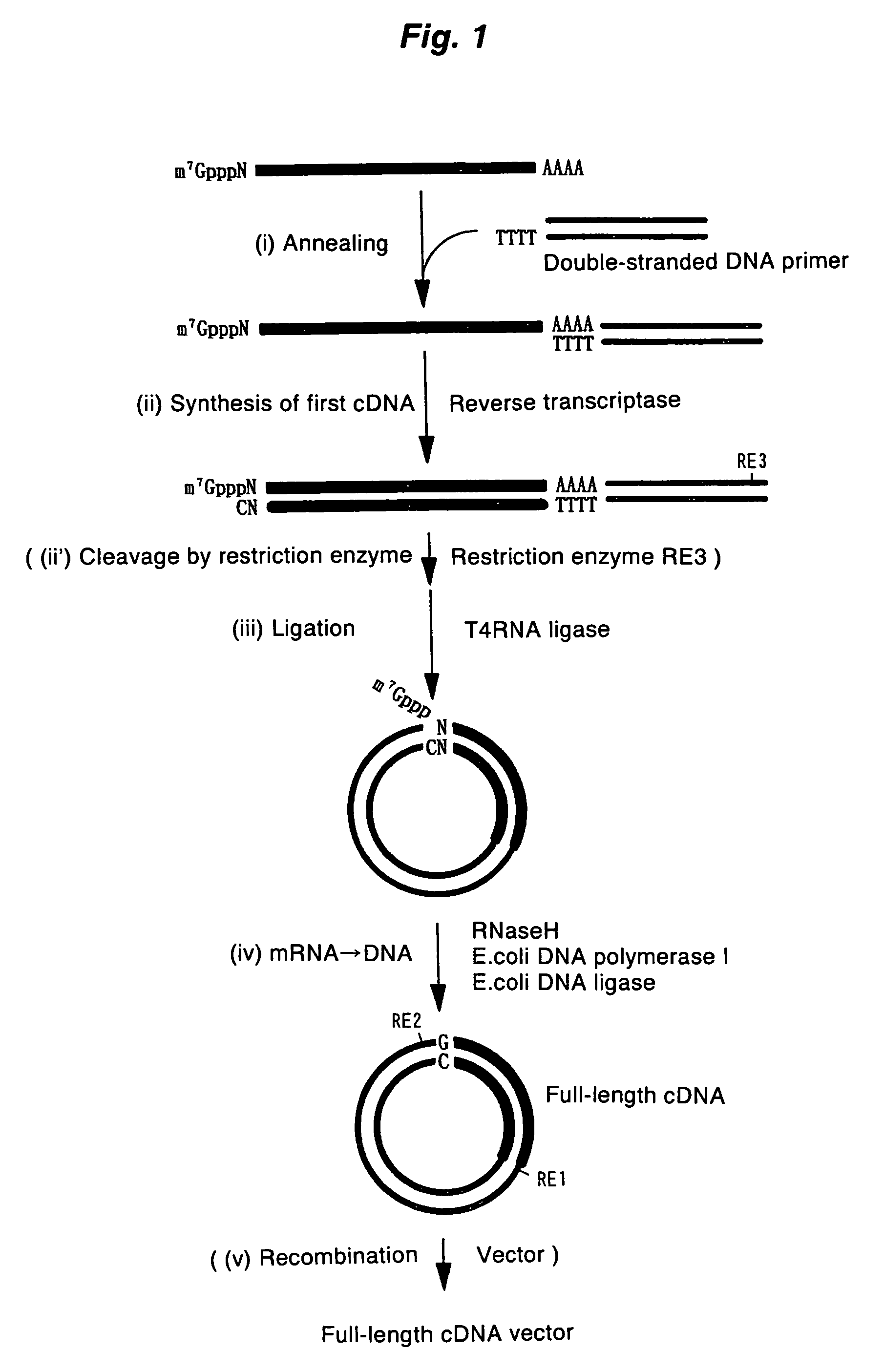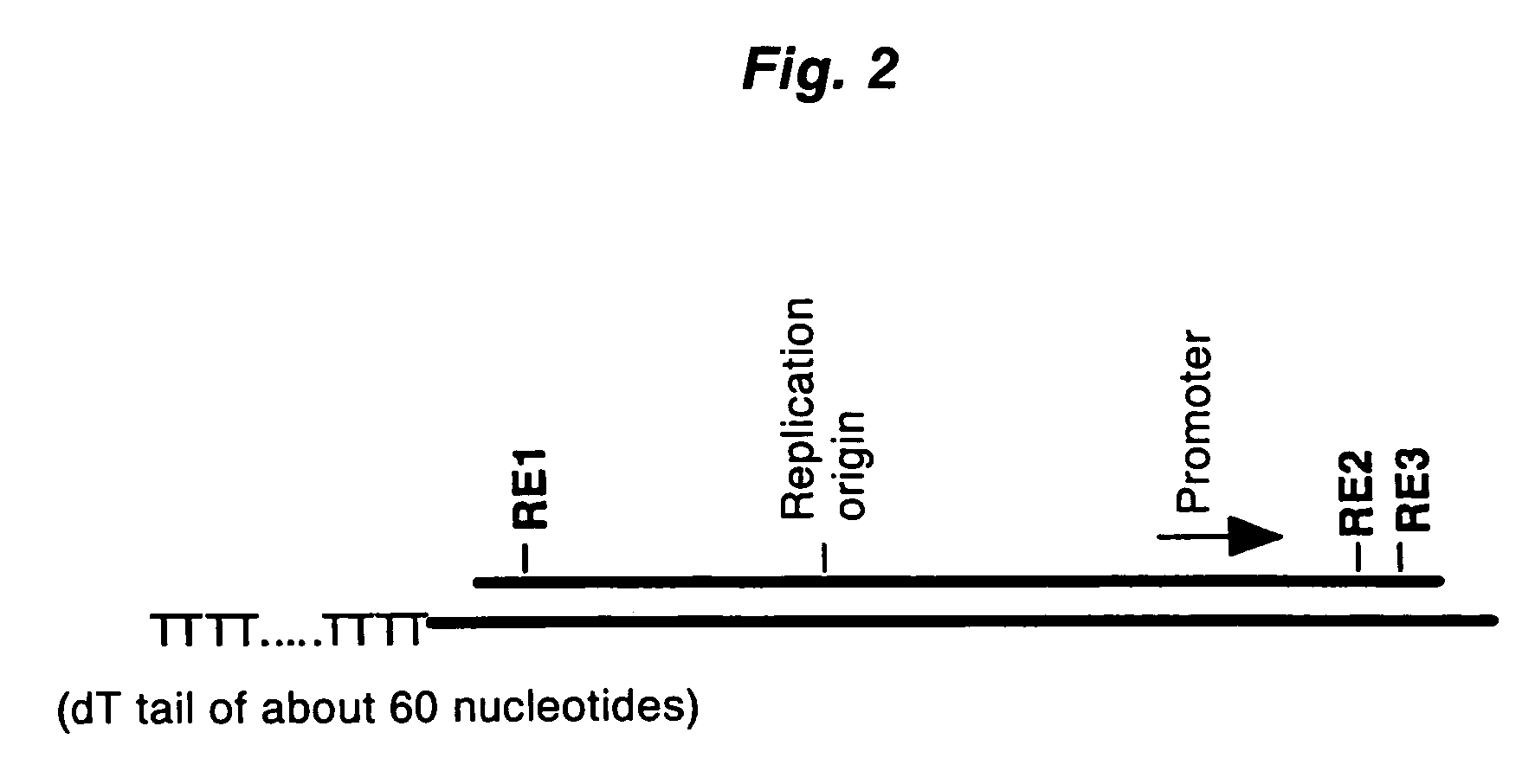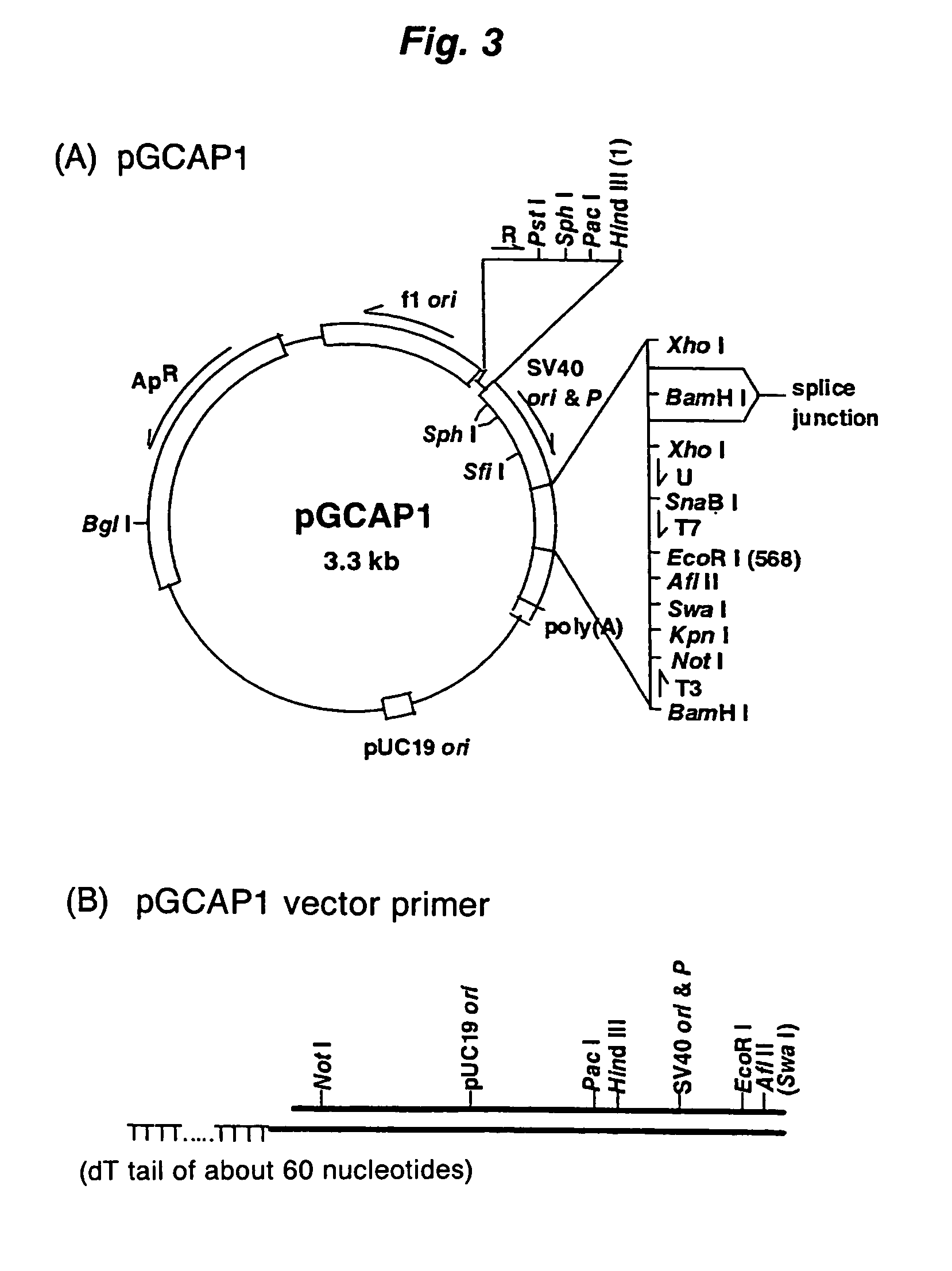Method of synthesizing cDNA
a cdna and synthesis technology, applied in the field of cdna synthesis, can solve the problems of many processes, difficult to determine whether the cdna clone is derived from full-length mrna or degraded mrna lacking a 5′ end, and foregoing any conventional method, and achieves a high yield of more than 90%
- Summary
- Abstract
- Description
- Claims
- Application Information
AI Technical Summary
Benefits of technology
Problems solved by technology
Method used
Image
Examples
example 1
cDNA Synthesis Using Cap Analogue-attached RNA
(1) Preparation of Cap Analogue-attached RNA
[0093]A full-length cDNA clone of human elongation factor-1α(EF-1α), pHP00155 (Non-patent Document 6), was linearized by digesting with NotI, and then this was used as a template to prepare mRNA using an in vitro transcription kit (Ambion). By adding m7G(5′)pppG(5) or A(5′)pppG(5) into the reaction solution as a cap analogue, model mRNA possessing “m7G” or “A” as a cap structure was obtained. In addition, by not adding the cap analogue, model mRNA without a cap structure was obtained. The 5′-terminal sequence of the in vitro transcription product is the sequence derived from the vector (5′-GGGAATTCGAGGA-3′) followed by the 5′-terminal sequence of EF-1α (5′-CTTTTTCGCAA . . . ).
(2) Synthesis of the First-strand cDNA
[0094]The first-strand cDNA complementary to model mRNA was synthesized by mixing 0.3 μg of the forgoing model mRNA and 0.3 μg of a pKA1 vector primer (one end has a 3′-end protruding ...
example 2
Preparation of cDNA Library Using mRNA Derived from Cultured Cell HT-1080
[0106]Total RNA was prepared from human fibrosarcoma cell line HT-1080 (purchased from Dainippon Pharmaceutical Co. Ltd.) using the AGPC method (a kit from Nippon Gene). Poly(A)+RNA was purified by binding to a biotinylated oligo(dT) primer (Promega), adding Sreptavidin MagneSphere Particles, and collecting by magnet. A cDNA library was prepared by synthesizing cDNA under the same conditions as described in Example 1 using 0.3 μg of poly(A) +RNA and 0.3 μg of a pKA1 vector primer, and carrying out transformation of E. coli. As a result, a library containing about 105-106 transformants was obtained. The libraries were prepared with or without decapping reaction, but there was no significant difference between analysis results of the two libraries. Thus, hereafter the results obtained without decapping reaction will be described.
[0107]The 5′-end nucleotide sequence of the cDNA was determined using a plasmid isola...
example 3
Preparation of cDNA Library Using Total RNA Derived from Cultured Cell Ht-1080
[0111]A cDNA library was prepared by synthesizing cDNA using 5 μg of total RNA prepared from human fibrosarcoma cell line HT-1080 and 0.3 μg of a vector primer under the same conditions as described in Example 1 (except for omitting decapping reaction), and transforming E. coli cells. As a result, a library containing about 105 transformants was obtained.
[0112]The 5′-end partial sequences of cDNA clones in this library were analyzed as described in Example 2. With regard to 222 clones whose sequences could be determined, BLAST search using nucleotide sequence database of GenBank showed that 217 clones had been registered in the database as a gene derived from mRNA. Out of them, all of 209 clones accounting for 94% of total clones contained a coding region. Of these clones, 189 clones started with “dG”. It should be noted that this library was prepared from total RNA but not from purified poly(A)+RNA. Furth...
PUM
| Property | Measurement | Unit |
|---|---|---|
| length | aaaaa | aaaaa |
| secondary structure | aaaaa | aaaaa |
| structure | aaaaa | aaaaa |
Abstract
Description
Claims
Application Information
 Login to View More
Login to View More - R&D
- Intellectual Property
- Life Sciences
- Materials
- Tech Scout
- Unparalleled Data Quality
- Higher Quality Content
- 60% Fewer Hallucinations
Browse by: Latest US Patents, China's latest patents, Technical Efficacy Thesaurus, Application Domain, Technology Topic, Popular Technical Reports.
© 2025 PatSnap. All rights reserved.Legal|Privacy policy|Modern Slavery Act Transparency Statement|Sitemap|About US| Contact US: help@patsnap.com



